A series of economic factors has coalesced over the past two years to make it extremely difficult or even impossible for many people in South Dakota to achieve the American Dream of homeownership.
The price of new and existing homes has skyrocketed in recent years at a time when modest wage gains for South Dakotans have been largely offset by high inflation. That economic imbalance has been exacerbated by dwindling availability of affordable homes, especially for first-time homebuyers.
Meanwhile, a surge of relocations to South Dakota during the COVID-19 pandemic has further inflated home prices, pushing many in-state residents out of the market, especially in the urban centers of Sioux Falls and Rapid City.
On a most basic level, the path to homeownership in South Dakota has been made far more difficult because the increase in incomes has not nearly kept up with the cost of a home, a disparity that grew during the pandemic.
According to the South Dakota Realtors Association, the statewide median home sales price rose by 54% from 2018 to 2022. Meanwhile, median household incomes in South Dakota rose by only 17% during that time, even with a healthy 10.4% household income jump from 2020 to 2021, according to the U.S. Census.
“I would say the American Dream of homeownership is wounded in South Dakota right now,” said Ron Sasso, a Black Hills real estate agent and former member of the Rapid City Council. “It’s not dead, but it’s tough out there for homebuyers, especially when you start looking at the middle to lower incomes, it’s definitely a lot tougher to buy a home right now.”
Home sales have slowed in recent months, but prices have continued to rise in South Dakota.
The median home sales price in the Sioux Falls metro area, which includes Lincoln and Minnehaha counties, was $265,000 in 2021 and has risen by 17% over the past year to $310,000 in 2022, according to the Realtors Association of the Sioux Empire.
The median home sales price in the Rapid City area was $317,000 in the third quarter of 2022, up 15% over the $275,000 median sale price in third quarter of 2021, according to the Black Hills Association of Realtors. In 2019, before the COVID pandemic, the median sales price in Rapid City was $207,000, according to city-data.
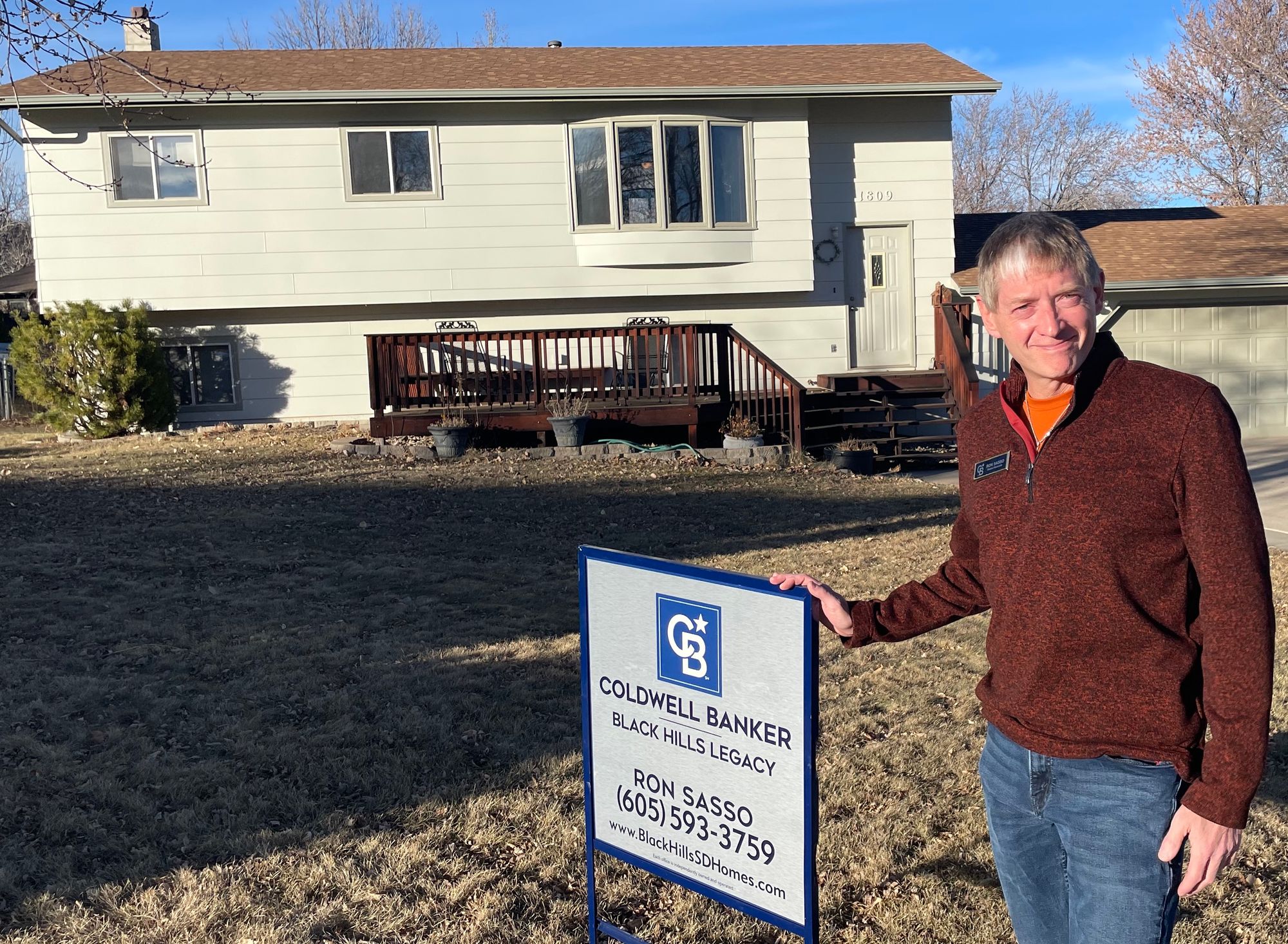
A series of economic factors has coalesced over the past two years to make it extremely difficult or even impossible for many people in South Dakota to achieve the American Dream of homeownership.
The price of new and existing homes has skyrocketed in recent years at a time when modest wage gains for South Dakotans have been largely offset by high inflation. That economic imbalance has been exacerbated by dwindling availability of affordable homes, especially for first-time homebuyers.
Meanwhile, a surge of relocations to South Dakota during the COVID-19 pandemic has further inflated home prices, pushing many in-state residents out of the market, especially in the urban centers of Sioux Falls and Rapid City.
On a most basic level, the path to homeownership in South Dakota has been made far more difficult because the increase in incomes has not nearly kept up with the cost of a home, a disparity that grew during the pandemic.
According to the South Dakota Realtors Association, the statewide median home sales price rose by 54% from 2018 to 2022. Meanwhile, median household incomes in South Dakota rose by only 17% during that time, even with a healthy 10.4% household income jump from 2020 to 2021, according to the U.S. Census.
“I would say the American Dream of homeownership is wounded in South Dakota right now,” said Ron Sasso, a Black Hills real estate agent and former member of the Rapid City Council. “It’s not dead, but it’s tough out there for homebuyers, especially when you start looking at the middle to lower incomes, it’s definitely a lot tougher to buy a home right now.”
Home sales have slowed in recent months, but prices have continued to rise in South Dakota.
The median home sales price in the Sioux Falls metro area, which includes Lincoln and Minnehaha counties, was $265,000 in 2021 and has risen by 17% over the past year to $310,000 in 2022, according to the Realtors Association of the Sioux Empire.
The median home sales price in the Rapid City area was $317,000 in the third quarter of 2022, up 15% over the $275,000 median sale price in third quarter of 2021, according to the Black Hills Association of Realtors. In 2019, before the COVID pandemic, the median sales price in Rapid City was $207,000, according to city-data.
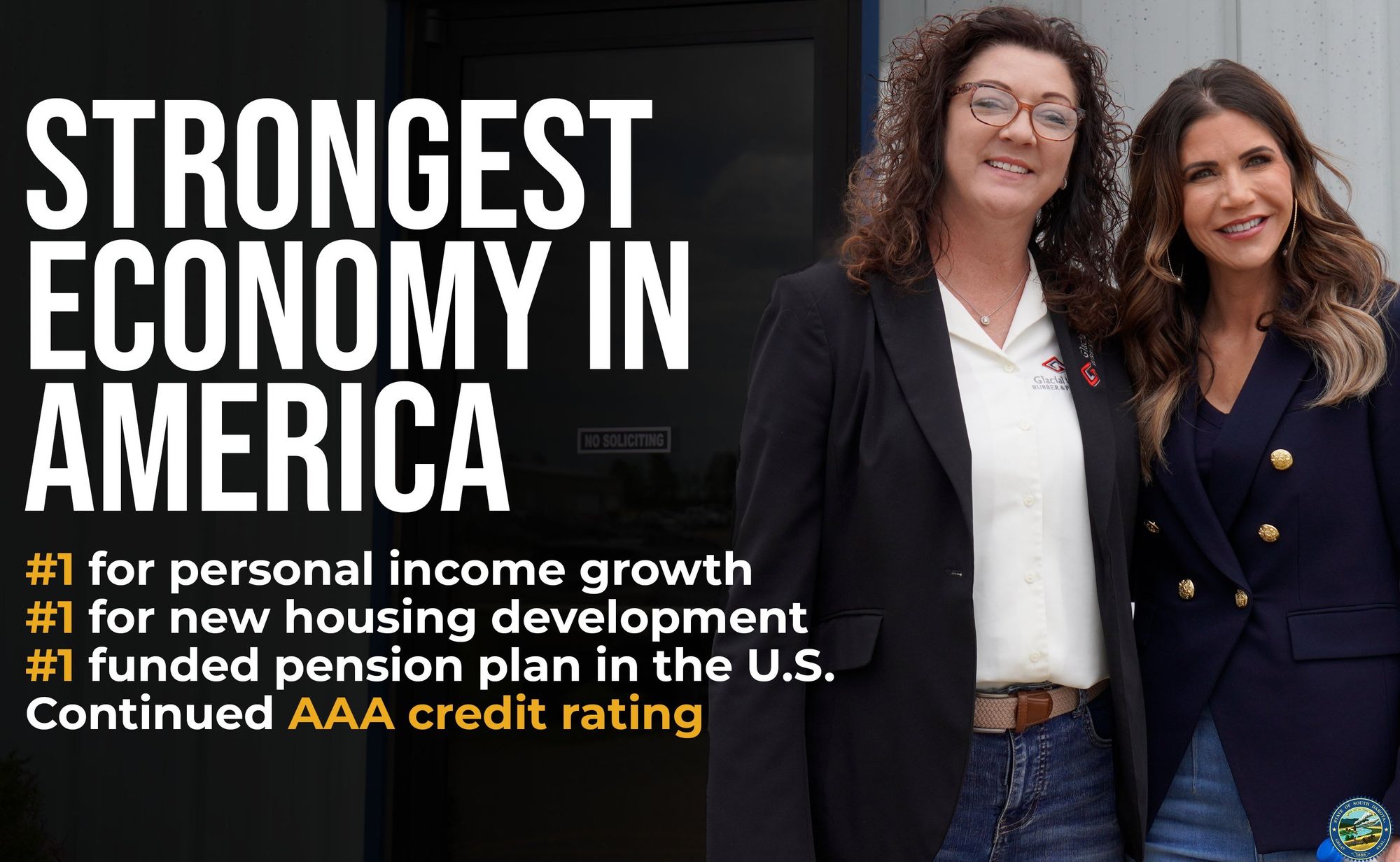
A series of economic factors has coalesced over the past two years to make it extremely difficult or even impossible for many people in South Dakota to achieve the American Dream of homeownership.
The price of new and existing homes has skyrocketed in recent years at a time when modest wage gains for South Dakotans have been largely offset by high inflation. That economic imbalance has been exacerbated by dwindling availability of affordable homes, especially for first-time homebuyers.
Meanwhile, a surge of relocations to South Dakota during the COVID-19 pandemic has further inflated home prices, pushing many in-state residents out of the market, especially in the urban centers of Sioux Falls and Rapid City.
On a most basic level, the path to homeownership in South Dakota has been made far more difficult because the increase in incomes has not nearly kept up with the cost of a home, a disparity that grew during the pandemic.
According to the South Dakota Realtors Association, the statewide median home sales price rose by 54% from 2018 to 2022. Meanwhile, median household incomes in South Dakota rose by only 17% during that time, even with a healthy 10.4% household income jump from 2020 to 2021, according to the U.S. Census.
“I would say the American Dream of homeownership is wounded in South Dakota right now,” said Ron Sasso, a Black Hills real estate agent and former member of the Rapid City Council. “It’s not dead, but it’s tough out there for homebuyers, especially when you start looking at the middle to lower incomes, it’s definitely a lot tougher to buy a home right now.”
Home sales have slowed in recent months, but prices have continued to rise in South Dakota.
The median home sales price in the Sioux Falls metro area, which includes Lincoln and Minnehaha counties, was $265,000 in 2021 and has risen by 17% over the past year to $310,000 in 2022, according to the Realtors Association of the Sioux Empire.
The median home sales price in the Rapid City area was $317,000 in the third quarter of 2022, up 15% over the $275,000 median sale price in third quarter of 2021, according to the Black Hills Association of Realtors. In 2019, before the COVID pandemic, the median sales price in Rapid City was $207,000, according to city-data.
A series of economic factors has coalesced over the past two years to make it extremely difficult or even impossible for many people in South Dakota to achieve the American Dream of homeownership.
The price of new and existing homes has skyrocketed in recent years at a time when modest wage gains for South Dakotans have been largely offset by high inflation. That economic imbalance has been exacerbated by dwindling availability of affordable homes, especially for first-time homebuyers.
Meanwhile, a surge of relocations to South Dakota during the COVID-19 pandemic has further inflated home prices, pushing many in-state residents out of the market, especially in the urban centers of Sioux Falls and Rapid City.
On a most basic level, the path to homeownership in South Dakota has been made far more difficult because the increase in incomes has not nearly kept up with the cost of a home, a disparity that grew during the pandemic.
According to the South Dakota Realtors Association, the statewide median home sales price rose by 54% from 2018 to 2022. Meanwhile, median household incomes in South Dakota rose by only 17% during that time, even with a healthy 10.4% household income jump from 2020 to 2021, according to the U.S. Census.
“I would say the American Dream of homeownership is wounded in South Dakota right now,” said Ron Sasso, a Black Hills real estate agent and former member of the Rapid City Council. “It’s not dead, but it’s tough out there for homebuyers, especially when you start looking at the middle to lower incomes, it’s definitely a lot tougher to buy a home right now.”
Home sales have slowed in recent months, but prices have continued to rise in South Dakota.
The median home sales price in the Sioux Falls metro area, which includes Lincoln and Minnehaha counties, was $265,000 in 2021 and has risen by 17% over the past year to $310,000 in 2022, according to the Realtors Association of the Sioux Empire.
The median home sales price in the Rapid City area was $317,000 in the third quarter of 2022, up 15% over the $275,000 median sale price in third quarter of 2021, according to the Black Hills Association of Realtors. In 2019, before the COVID pandemic, the median sales price in Rapid City was $207,000, according to city-data.
“We imported, under the guise of freedom, a lot of new South Dakotans who came here in the last two and a half years, and what they brought with them was their housing inflation." -- Steve Ennis, Sioux Falls mortgage lender
A series of economic factors has coalesced over the past two years to make it extremely difficult or even impossible for many people in South Dakota to achieve the American Dream of homeownership.
The price of new and existing homes has skyrocketed in recent years at a time when modest wage gains for South Dakotans have been largely offset by high inflation. That economic imbalance has been exacerbated by dwindling availability of affordable homes, especially for first-time homebuyers.
Meanwhile, a surge of relocations to South Dakota during the COVID-19 pandemic has further inflated home prices, pushing many in-state residents out of the market, especially in the urban centers of Sioux Falls and Rapid City.
On a most basic level, the path to homeownership in South Dakota has been made far more difficult because the increase in incomes has not nearly kept up with the cost of a home, a disparity that grew during the pandemic.
According to the South Dakota Realtors Association, the statewide median home sales price rose by 54% from 2018 to 2022. Meanwhile, median household incomes in South Dakota rose by only 17% during that time, even with a healthy 10.4% household income jump from 2020 to 2021, according to the U.S. Census.
“I would say the American Dream of homeownership is wounded in South Dakota right now,” said Ron Sasso, a Black Hills real estate agent and former member of the Rapid City Council. “It’s not dead, but it’s tough out there for homebuyers, especially when you start looking at the middle to lower incomes, it’s definitely a lot tougher to buy a home right now.”
Home sales have slowed in recent months, but prices have continued to rise in South Dakota.
The median home sales price in the Sioux Falls metro area, which includes Lincoln and Minnehaha counties, was $265,000 in 2021 and has risen by 17% over the past year to $310,000 in 2022, according to the Realtors Association of the Sioux Empire.
The median home sales price in the Rapid City area was $317,000 in the third quarter of 2022, up 15% over the $275,000 median sale price in third quarter of 2021, according to the Black Hills Association of Realtors. In 2019, before the COVID pandemic, the median sales price in Rapid City was $207,000, according to city-data.
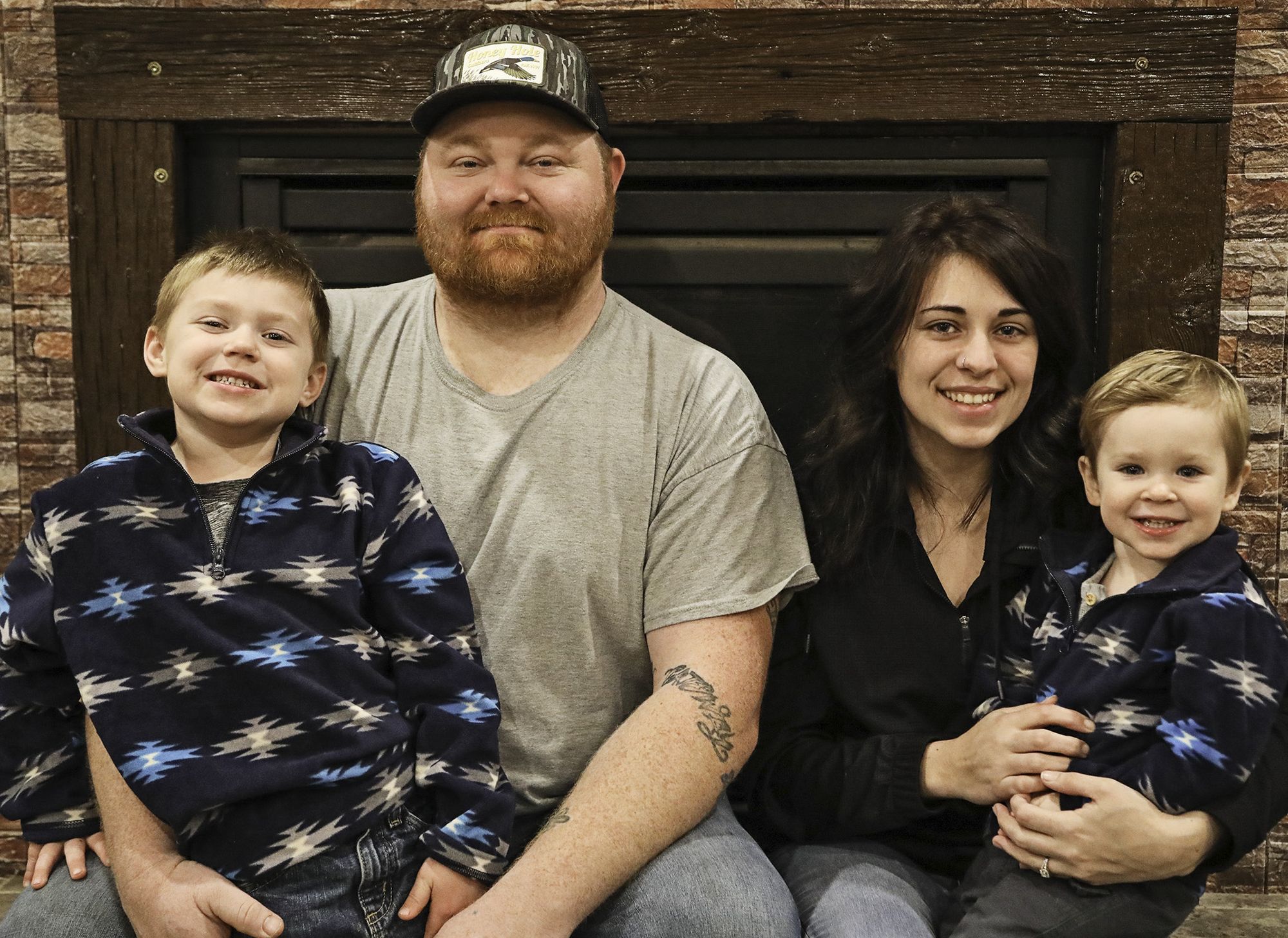
Housing case study #1 – Lack of homes holds back growth in Wessington Springs
Over many months, Summer Schooler and her fiancé Adam Wolfcale were building their family and their future in a place they both love dearly — the town of Wessington Springs, a Jerauld County hamlet located 50 miles northwest of Mitchell, S.D.
But recently, a horrific house fire and a tight real estate market put their dreams on hold and their lives in limbo.
On Nov. 12, 2022, Schooler was asleep in bed with her two children ages 2 and 4 — who had rousted their dad and sent him to get some shuteye on the sofa because they wanted to sleep with mom — when she awoke to the sound of a smoke alarm and the acrid smell of smoke.
She grabbed the children, awoke Wolfcale and they all rushed outside to safety. Schooler suffered lung damage when she returned to save her pets, ultimately losing one cat to the fire.
As they slowly recover, the couple is realizing that not only did they lose their rental home and all their belongings to smoke damage, but they may have also lost their ability to remain in Wessington Springs.
“We do love this small town,” Schooler said. “Everyone knows everyone and helps each other out, and it is completely safe for my son to walk across the street or ride a bike up and down the road.”
As is common in many rural towns across South Dakota, housing options are limited in Wessington Springs, and decent affordable homes are even harder to come by. The lack of available and affordable housing is one reason many rural towns across America are steadily losing population.
While living with a relative, the couple has begun to search for a home to purchase in Wessington Springs. Their first look at the market was stunning, as only three single-family properties were for sale, and only two in their price range of under $100,000.
One affordable property was already under contract, and the other, at $89,000, was too small to house a family of four and had no basement, Schooler said.
“I definitely feel like with inflation and the housing market and everything else going up, and wages not going up, it makes it much harder to find something that accommodates families,” she said.
The frustration felt by Schooler and Wolfcale is more common than it should be in Wessington Springs, which had a population of almost 1,100 in 1990 but fell under 800 in 2020.
A 2021 housing study made note of the town’s aging housing stock and concluded it needed development of at least a dozen new homes to meet the immediate need. The study suggested that to afford those homes, most residents under 44 in Wessington Springs would need some form of financial assistance to achieve homeownership.
“You look at a town like Springs, and a lot of businesses can’t afford to pay people more than 14 or 16 bucks an hour,” said Loree Gaikowski, a board member with the local economic development authority. “Even with two incomes at those levels, how could you buy a house for $250,000? You can’t really get anything for under $100,000 anymore, and if you can, it probably needs another $100,000 to fix it up.”
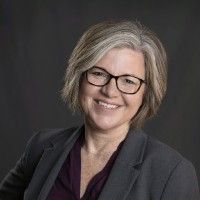
Wessington Springs has an opportunity to strengthen its economy and future by building on its reputation as a safe, welcoming community for young families and retirees, but it cannot due to a lack of available homes, Gaikowski said.
One challenge unique to Wessington Springs is that some houses destroyed in a 2014 tornado have not been rebuilt, and vacant lots where they stood are too expensive to develop due to aging underground infrastructure that would need to be replaced, Gaikowski said.
The lack of housing and affordable rental units is slowing the potential growth of the town, she said.
“If you’re in maintenance mode, you’re actually declining,” she said. “You’ve got to be looking to the future in these small towns all the time because growth means sales-tax revenue, kids in schools, property-tax revenue, local shopping options, jobs for people and opportunities for small businesses.”
The idea of leaving their adopted hometown is adding to the trauma suffered by Schooler, Wolfcale and their children after the fire.
Schooler, 25, has a job she enjoys as a certified nursing assistant at a long-term care facility, and Wolfcale, 32, has a good job working for a trucking company in nearby Alpena. Their oldest son attends pre-school, where he has many friends and helpful caregivers who, Schooler said, “are the only safe things he has to hold onto right now.”
Renting is an option for the couple, but options are limited in Wessington Springs and rents can be as high as a house payment. Renting also won’t help their family grow roots or build financial equity, Schooler said, and the family is reluctant to move to Sioux Falls or some other larger city because they would lose the benefits of small-town life.
“We’re going to keep trying and trying and trying, to do everything we possibly can to stay in the area,” Schooler said. “If it comes down to it and we can’t stay because there are no houses, we’re going to have to find something else to do and somewhere else to live.”
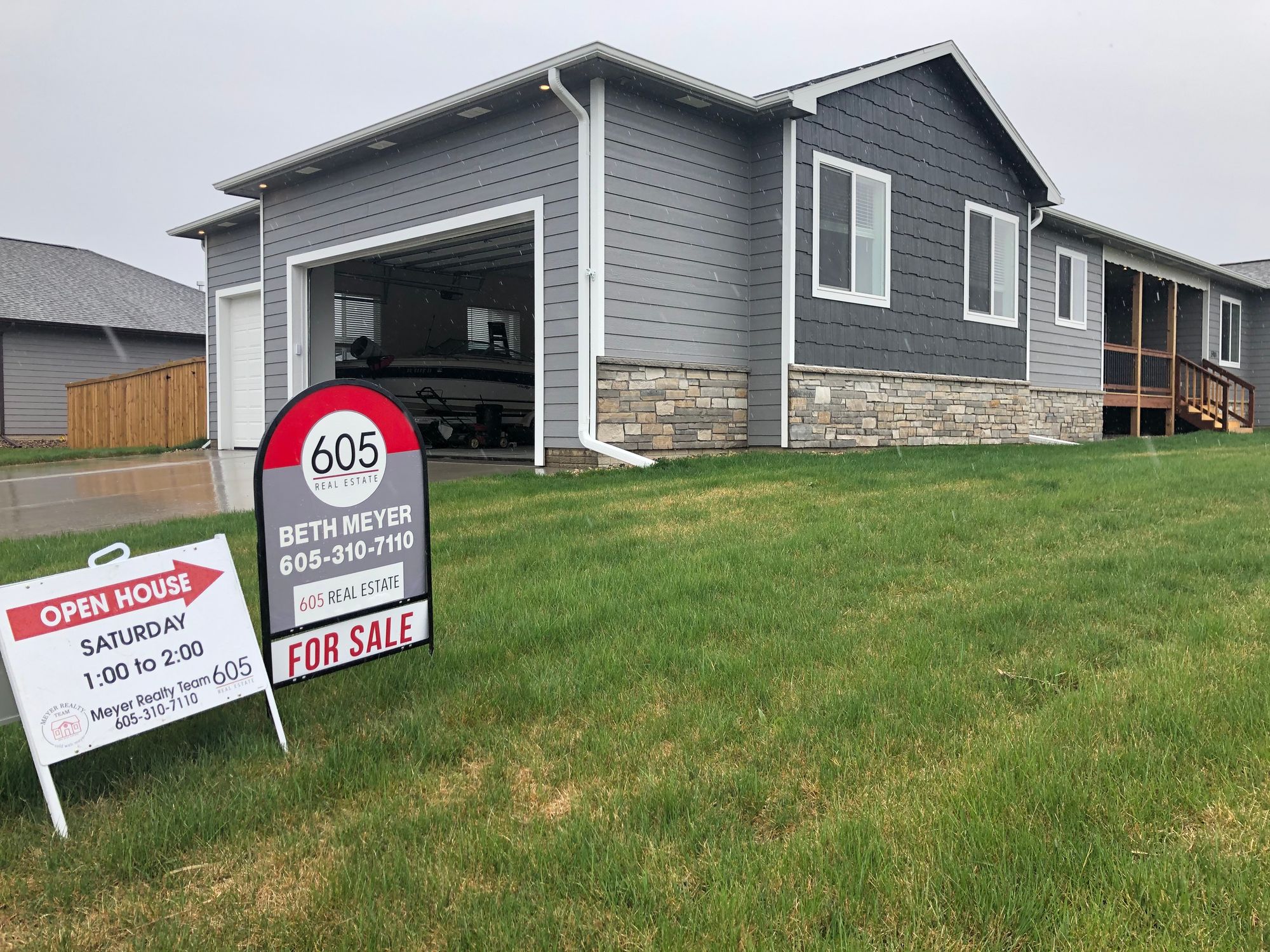
A series of economic factors has coalesced over the past two years to make it extremely difficult or even impossible for many people in South Dakota to achieve the American Dream of homeownership.
The price of new and existing homes has skyrocketed in recent years at a time when modest wage gains for South Dakotans have been largely offset by high inflation. That economic imbalance has been exacerbated by dwindling availability of affordable homes, especially for first-time homebuyers.
Meanwhile, a surge of relocations to South Dakota during the COVID-19 pandemic has further inflated home prices, pushing many in-state residents out of the market, especially in the urban centers of Sioux Falls and Rapid City.
On a most basic level, the path to homeownership in South Dakota has been made far more difficult because the increase in incomes has not nearly kept up with the cost of a home, a disparity that grew during the pandemic.
According to the South Dakota Realtors Association, the statewide median home sales price rose by 54% from 2018 to 2022. Meanwhile, median household incomes in South Dakota rose by only 17% during that time, even with a healthy 10.4% household income jump from 2020 to 2021, according to the U.S. Census.
“I would say the American Dream of homeownership is wounded in South Dakota right now,” said Ron Sasso, a Black Hills real estate agent and former member of the Rapid City Council. “It’s not dead, but it’s tough out there for homebuyers, especially when you start looking at the middle to lower incomes, it’s definitely a lot tougher to buy a home right now.”
Home sales have slowed in recent months, but prices have continued to rise in South Dakota.
The median home sales price in the Sioux Falls metro area, which includes Lincoln and Minnehaha counties, was $265,000 in 2021 and has risen by 17% over the past year to $310,000 in 2022, according to the Realtors Association of the Sioux Empire.
The median home sales price in the Rapid City area was $317,000 in the third quarter of 2022, up 15% over the $275,000 median sale price in third quarter of 2021, according to the Black Hills Association of Realtors. In 2019, before the COVID pandemic, the median sales price in Rapid City was $207,000, according to city-data.

Housing Case Study #2 — Managing expectations in Rapid City
Just a few years ago, being pre-qualified for a home loan of $300,000 might have put someone in Rapid City in the market for a newish home with a basement, garage, several bedrooms and possibly some land in a good neighborhood.
But now, with home prices rising fast in recent years, couples like Brad Speas and Shaylynn Hurd are having to manage their expectations for what a $300,00 purchase price might get them.
Hurd, 35, and Speas, 51, want to move away from renting and into homeownership to build financial equity and a solid financial future for their blended family.
“I regret it to this day all the years I paid someone else’s mortgage,” Hurd said. “I could probably own three houses by now for all the rent I’ve paid.”
Speas has lived in Rapid City for years, while Hurd grew up in the area, spent several years in Colorado, and is now hoping to settle down in a home they can afford and enjoy for at least a few years.
Hurd runs a home-cleaning service and is a full-time technical school student, while Speas is a route sales driver for a bread company. The couple is pre-qualified for about a $300,000 purchase price, Speas said.
The couple recently showed up at an open house at a property for sale on Galaxy Drive in an area tucked into the southeast intersection of Interstates 90 and 190 in north Rapid City. The four-bed, two-bath split-level home was built in 1985 and has nearly 2,000 square feet of living space. The home appears to be in good shape, with a two-car garage and a small fenced yard, and a back-yard deck that faces several neighboring houses. The home last sold for $48,000 in 1992, but the assessed value has risen 34% in the past three years, from $167,300 in 2019 to $224,100 in 2022, according to Pennington County property records. The property is listed for sale at $289,000.
Speas and Hurd seemed generally pleased with the condition of the home, though Hurd said the property had a 21-year-old furnace and needed some work in the backyard.
“In this price range, this is about the best we’ve seen,” Hurd said. “There’s some properties out there that are more affordable, but you’re going to spend a lot of time and effort to bring it up to speed and make it decent.”
Like many potential homeowners in the current South Dakota market, the couple is resigned to the fact that they may not get exactly what they want in a home they can afford, especially not the land ownership they hoped for.
“I feel pretty comfortable with $300,000, but it’s not what it used to be, that’s for sure,” Speas said.
They recently visited a property near Hermosa, a rural area just south of Rapid City, and though the land price was reasonable, they likely could not then afford to pay for infrastructure and the costs of home construction, Speas said. Paying taxes on properties with rapidly rising sticker prices adds to the current homeownership challenge, Speas said.
“That property by Hermosa was assessed at $86,000 four years ago, and today it’s at $247,000, so your tax bill is tripled along with the price,” he said. “The value of these properties has gone up triple, and the wages haven’t even gone up double in the past five years.”
The imbalance between stagnant or slightly rising wages and the rapidly rising cost of homes has put homeownership in jeopardy for adults looking for homes now, but also for young people who may pursue homeownership in the coming years, said Hurd, who has an 8-year-old daughter.
“It’s disgusting what they’re paying people,” she said. “You expect a 21-year-old to want to buy a home when they’re only making $15 an hour — how in the heck are they supposed to do that?”
Hurd worries her daughter may face even greater difficulty in achieving homeownership if employers do not begin to pay workers a wage that keeps up with or exceeds inflation.
Stuart Martin, a REMAX real estate agent in Rapid City, said the local market has always had relatively high prices for South Dakota because the city is close to the Black Hills.
The Rapid City area felt significant inflationary pricing influences from the influx of out-of-state buyers during the pandemic, though their influence has waned in 2022.
“We were not able to get some of the people in our area into homes because we did have such an influx of people coming from other areas, but I think we’ve seen the mass exodus from other areas has very much slowed down,” Martin said.
A lingering effect of the migration to South Dakota may be that prices remain higher than they would have been otherwise, Martin said.

“It definitely increased the value of homes, and I don’t believe were seeing drastic price reductions in sellers now,” he said.
The price hikes were evident across the Black Hills market, from log homes in the hills to small homes in established neighborhoods where first-time homebuyer options were plentiful before the pandemic, he said.
Some local buyers on the market are having to pull back on what they are seeking in a home, Martin said.
“They want to be in the trees on a one-acre lot for $300,000, and that’s a very, very small needle in the haystack right now,” he said.
Martin said a three-bedroom, one-bath home with a single garage in the older Robbinsdale neighborhood of Rapid City might have been in the high $100,000s in 2019, but is more likely to be listed as high as $240,000, he said.
Martin said it’s clear from his experience that wages have not nearly kept up with home prices in the Black Hills region.
However, Martin said he remains optimistic that buyers can find a good home in Rapid City. He urged potential buyers to sit down with an agent or a lender and really talk through options that could include down-payment assistance or a lower government-backed interest rate to save money on a monthly mortgage.
“There would be nothing more pleasing for me than to sit down with people to help them figure out how are we going to get them into a home,” Martin said. “There’s more homes coming on the market; they are more expensive than they were in 2019, but they’re out there.”
Hurd said she knows some homeowners who are looking to sell and return to renting because the cost of maintaining a home has risen so fast.
“Even people who own homes now are getting out of it and getting into apartment complexes because it’s become almost impossible for them to live a comfortable lifestyle and take care of everything that’s required to maintain a home,” she said.
Hurd said she’s also seen a societal shift in that many people who thought they might inherit a home someday are finding that their parents are holding onto properties longer or need to sell in order to pay for long-term care.
“They’re going to bank on their parents leaving them a house, and that’s what a lot of people expect, and that’s how it used to be because the home went through the generations,” she said. “But it’s not happening that much anymore.”
A series of economic factors has coalesced over the past two years to make it extremely difficult or even impossible for many people in South Dakota to achieve the American Dream of homeownership.
The price of new and existing homes has skyrocketed in recent years at a time when modest wage gains for South Dakotans have been largely offset by high inflation. That economic imbalance has been exacerbated by dwindling availability of affordable homes, especially for first-time homebuyers.
Meanwhile, a surge of relocations to South Dakota during the COVID-19 pandemic has further inflated home prices, pushing many in-state residents out of the market, especially in the urban centers of Sioux Falls and Rapid City.
On a most basic level, the path to homeownership in South Dakota has been made far more difficult because the increase in incomes has not nearly kept up with the cost of a home, a disparity that grew during the pandemic.
According to the South Dakota Realtors Association, the statewide median home sales price rose by 54% from 2018 to 2022. Meanwhile, median household incomes in South Dakota rose by only 17% during that time, even with a healthy 10.4% household income jump from 2020 to 2021, according to the U.S. Census.
“I would say the American Dream of homeownership is wounded in South Dakota right now,” said Ron Sasso, a Black Hills real estate agent and former member of the Rapid City Council. “It’s not dead, but it’s tough out there for homebuyers, especially when you start looking at the middle to lower incomes, it’s definitely a lot tougher to buy a home right now.”
Home sales have slowed in recent months, but prices have continued to rise in South Dakota.
The median home sales price in the Sioux Falls metro area, which includes Lincoln and Minnehaha counties, was $265,000 in 2021 and has risen by 17% over the past year to $310,000 in 2022, according to the Realtors Association of the Sioux Empire.
The median home sales price in the Rapid City area was $317,000 in the third quarter of 2022, up 15% over the $275,000 median sale price in third quarter of 2021, according to the Black Hills Association of Realtors. In 2019, before the COVID pandemic, the median sales price in Rapid City was $207,000, according to city-data.
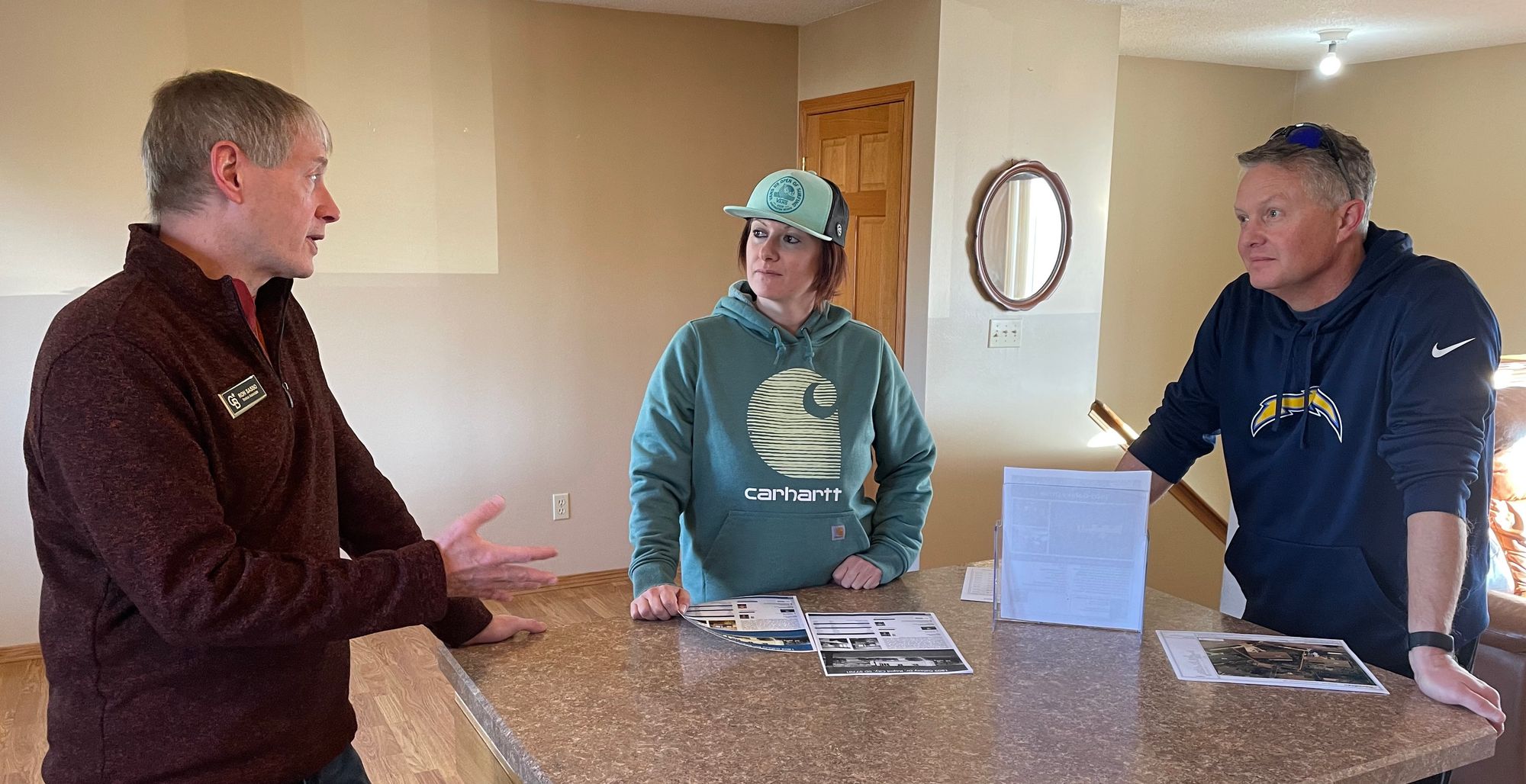
A series of economic factors has coalesced over the past two years to make it extremely difficult or even impossible for many people in South Dakota to achieve the American Dream of homeownership.
The price of new and existing homes has skyrocketed in recent years at a time when modest wage gains for South Dakotans have been largely offset by high inflation. That economic imbalance has been exacerbated by dwindling availability of affordable homes, especially for first-time homebuyers.
Meanwhile, a surge of relocations to South Dakota during the COVID-19 pandemic has further inflated home prices, pushing many in-state residents out of the market, especially in the urban centers of Sioux Falls and Rapid City.
On a most basic level, the path to homeownership in South Dakota has been made far more difficult because the increase in incomes has not nearly kept up with the cost of a home, a disparity that grew during the pandemic.
According to the South Dakota Realtors Association, the statewide median home sales price rose by 54% from 2018 to 2022. Meanwhile, median household incomes in South Dakota rose by only 17% during that time, even with a healthy 10.4% household income jump from 2020 to 2021, according to the U.S. Census.
“I would say the American Dream of homeownership is wounded in South Dakota right now,” said Ron Sasso, a Black Hills real estate agent and former member of the Rapid City Council. “It’s not dead, but it’s tough out there for homebuyers, especially when you start looking at the middle to lower incomes, it’s definitely a lot tougher to buy a home right now.”
Home sales have slowed in recent months, but prices have continued to rise in South Dakota.
The median home sales price in the Sioux Falls metro area, which includes Lincoln and Minnehaha counties, was $265,000 in 2021 and has risen by 17% over the past year to $310,000 in 2022, according to the Realtors Association of the Sioux Empire.
The median home sales price in the Rapid City area was $317,000 in the third quarter of 2022, up 15% over the $275,000 median sale price in third quarter of 2021, according to the Black Hills Association of Realtors. In 2019, before the COVID pandemic, the median sales price in Rapid City was $207,000, according to city-data.
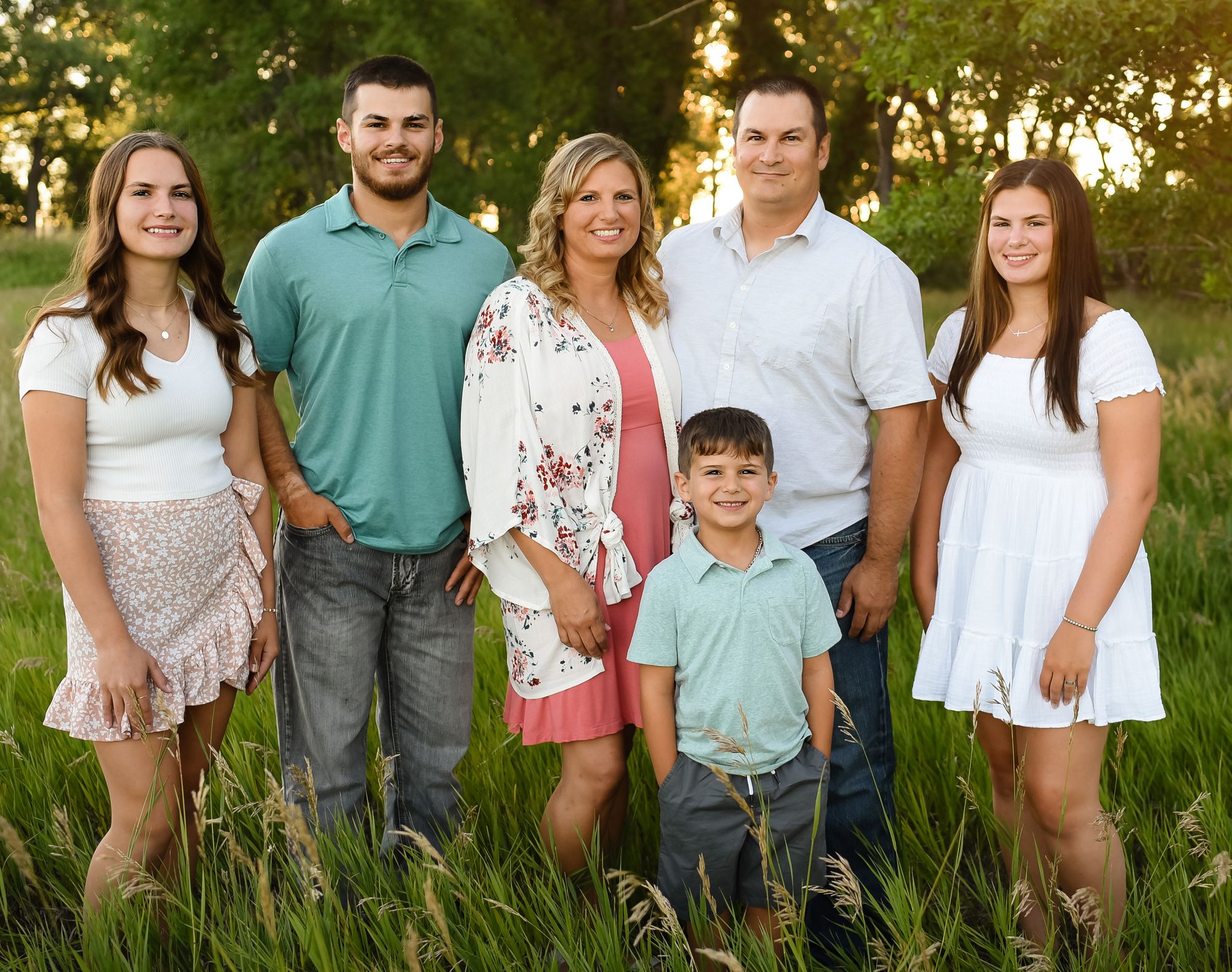
Housing Case Study #3 – Man on a mission to provide housing in Herreid
The homeownership journey for Jeff and Stacy Jochim provides a pair of meaningful messages — one promising, the other ominous — about the real estate market in South Dakota.
On the plus side, their path shows how a middle-income family, with the help of a determined local housing official and a supportive community, can use government programs and keen knowledge of the local housing market to buy a home, improve their lifestyle and strengthen their financial future.
But their story also sheds light on how difficult it is to buy a home in South Dakota now compared with just a few years ago, and how families on the market for a home in 2022 might get stuck renting and not building long-term equity.
Four years ago, the Jochims and their four children were living in a farmhouse they rented from a relative outside McLaughlin, S.D., a town on the Standing Rock Indian Reservation in Corson County. It was far from ideal in that one child had a long commute to school, they were not building any financial equity and they wanted to be closer to Stacy’s family more than an hour away in Herreid, S.D., across the Missouri River.
As they scouted homes to purchase in Herreid, they faced challenges common in small towns then and now: low housing inventory and limited ability to secure a mortgage. Stacy, 44, was a teacher in McLaughlin who left her job to make the move to Herreid possible and to start a new career in accounting; Jeff, 43, runs a home-based business building custom motorcycle parts and providing Eurothane coating services to area industries.
At some point, the couple connected with a man named Dick Werner, a former South Dakota legislator and banking officer who retired and now works in a volunteer position as head of the Herreid Area Housing Development Corporation.
With Werner’s help, the couple was able to find an affordable home that met their unique needs, and they benefited from Werner’s expertise in utilizing local, regional and state housing-assistance programs. The Jochims received three forms of down-payment assistance that lowered their mortgage significantly. In all, they received $24,500 in assistance from GROW SD, the Herreid housing agency and Homes Are Possible, Inc., an Aberdeen-based community finance and housing-development organization.
“We probably could have done it on our own, but it made the move a little bit easier and it brought the mortgage down a little bit,” Jeff Jochim said.
In 2018, the Jochims were able to purchase a home built in 1945 on Main Street in Herreid that had been added onto over the years, now totaling 2,200 square feet. The home has three bedrooms and three baths, plus a basement and garage/workshop. They bought it for $105,000 at 4.25%, and their monthly mortgage payment is about $700, Jochim said.
“We really lucked out, and we dodged a bullet by buying then,” he said. “Looking at the market now, we wouldn’t be able to be purchasing because everything is so inflated.”
The Herreid housing group formed about six years ago when 30 local people loaned at least $5,000 each to form a fund that would pay to develop new or rehab existing homes and rentals. They raised $180,000 to start and have since built three homes, developed more than a dozen rental units and helped 18 homeowners make improvements to their properties. The group has also led such improvement projects as a city park and sports complex, and has several lots purchased for future home sites.
Werner is committed to increasing homeownership to help individual families but also to help Herreid grow and prosper. The population of Herreid peaked at nearly 800 in 1960, then dropped below 500 in 1990 and how sits at just over 400.
Maintaining enough families to support the local school system is a major secondary goal to his housing efforts, he said. Herreid is home to farmers and ranchers but also attracts immigrant families who work in nearby firms, including area wind farms and the Pig Improvement Co. in Mound City.
“For them, it’s a dream to own a home and it’s a dream home for them,” he said.
Finding a home and a suitable payment plan for a local family of 11 took Werner almost three years to finalize, he said. When Werner met the family members, they were living in a single-wide mobile home with one child sleeping in the entryway. Leaving town was likely at that time, Werner said.
“They didn’t have a dream of ever owning a home,” Werner said. “But all those kids were in school and they were worth $45,000 in revenue for the local school system.”
Eventually, Werner and the local housing group were able to develop a workable financial plan with help from Grow South Dakota, the South Dakota Housing Development Authority, HAPI of Aberdeen and the U.S. Department of Agriculture.
Werner found the family $37,000 in down-payment assistance and a $135,000 mortgage locked in at 1% interest for a 30-year note. His agency paid to finish the basement in the home to add three more bedrooms.
“It took a lot of partners to make the thing work,” he said. “But if we can get a lot of organizations to help just a little bit, we can make homeownership happen.”
Being creative can also expedite the growth of homeownership, Werner said. For example, when Werner gets word that a retiree or an elderly family is interested in selling their home, his group and area agencies offer assistance that makes it easier for families to bid on and potentially buy those homes at market price.
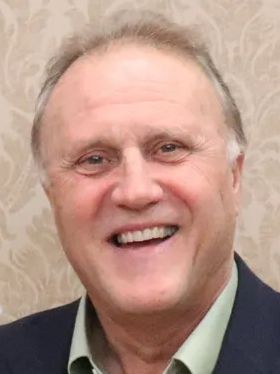
“We’re in America, and the American Dream is home ownership, so we should be able to find a way to make this happen,” he said. “We have to keep that dream alive, otherwise what is there for these working families to aspire to?”
Jochim said he has watched what has happened to the state and national economy and the local housing market and is unsure if the family would be able to buy a home at this time.
“It wouldn’t be easy, especially because we had to get a new used vehicle to fit the bigger family,” he said. “We wouldn’t be able to have a car payment while we’re managing a mortgage payment. We’d be looking at one of the spouse’s incomes going entirely to the house payment.”
The current South Dakota economy makes it hard for small families on many levels, Jochim said.
Jochim is concerned that other families in the area might not be able to achieve homeownership in the current economy and real estate market.
“The biggest thing hindering us right now is food, gas, and inflation,” he said. “It’s taking a big chunk out of everybody’s salary.”
He also questions whether his family will able to move forward in its homeownership journey, whether it be moving to a better location or adapting to changes in their job situations or when their children leave home.
“Right now, looking at if we decide to do this same move again, I don’t know if it would happen,” he said. “With inflation and interest rates, prices too high and the job market and salaries available, it would be a whole other story and I don’t think we could pull it off.”
Werner said he isn’t sure if his unique approach to helping potential homeowners in a town as small as Herreid would work in larger cities and towns. He acknowledges there is no “cookie-cutter” approach to managing the current real estate market for working families, but he said any effort made by individuals, government or other groups will be well worth it.
“Nobody is going to show up with a pot of gold to make this happen. You have to just keep looking for the funding so the homeowner you are helping is going to be successful,” Werner said. “It’s the hardest but most rewarding thing. Helping families achieve the American Dream of homeownership is one of the most important things you can ever do in your life.”
Online panel discussion on housing set for Thursday, Dec. 15, 2022
South Dakota News Watch will host a one-hour panel discussion on the issues addressed in this article on Thursday, Dec. 15, 2022 at 7:30 pm CT/7:30 pm MT.
You can CLICK HERE to register in advance, or watch a taping of the discussion on the News Watch Facebook page at anytime after the program airs.




